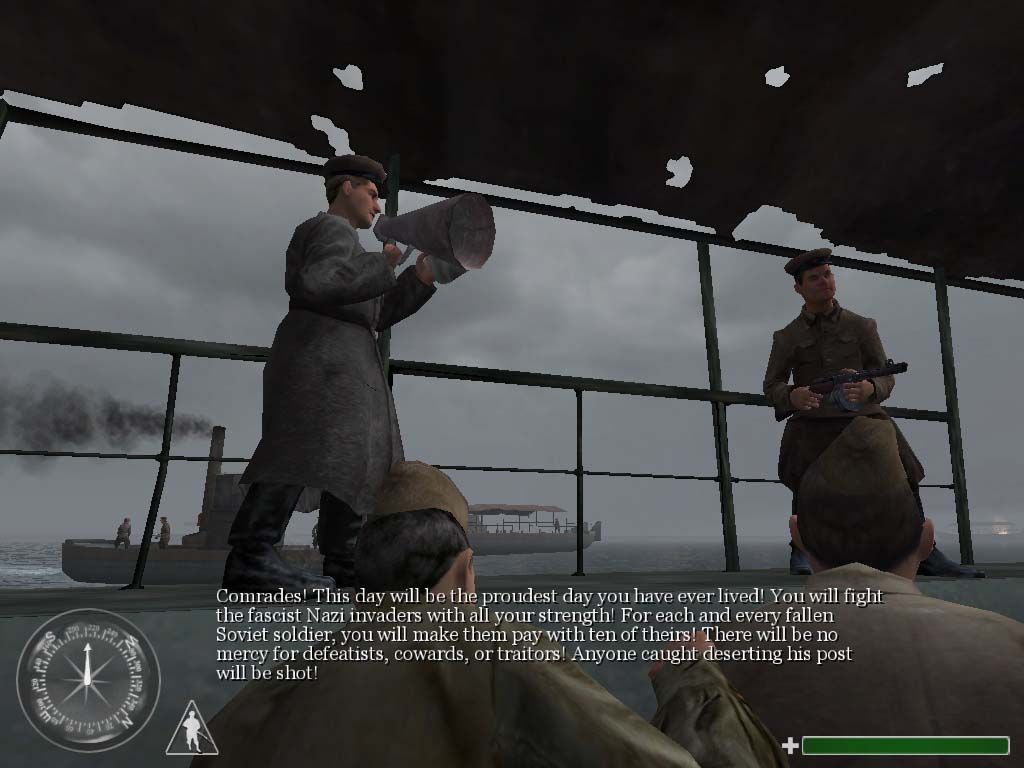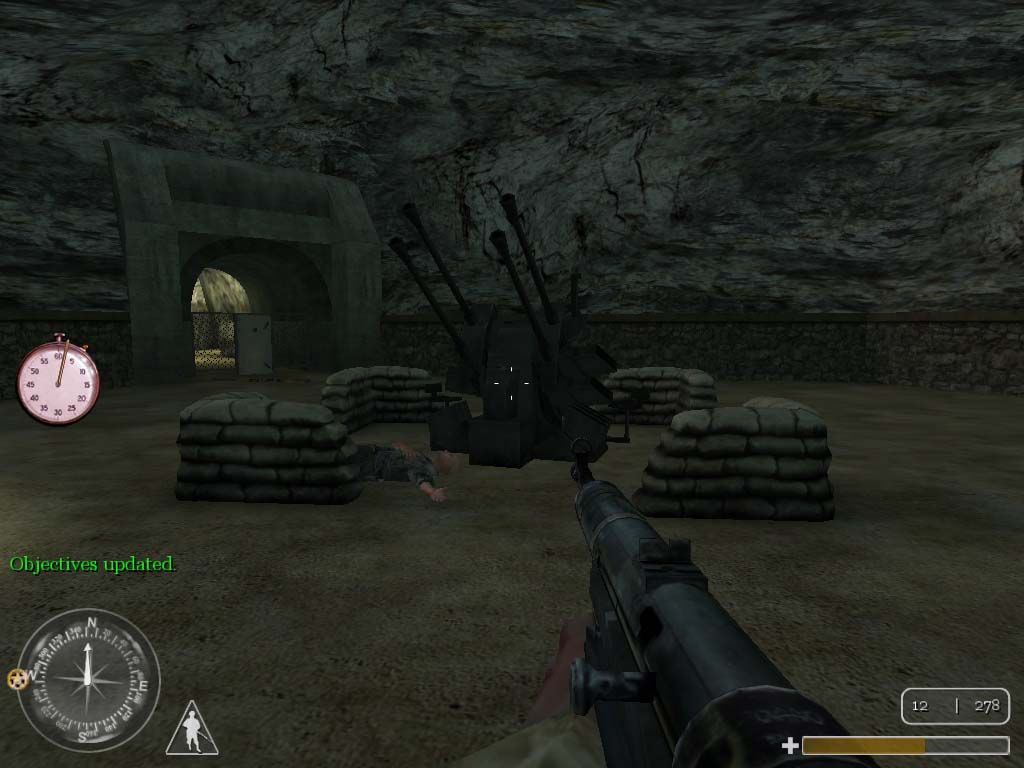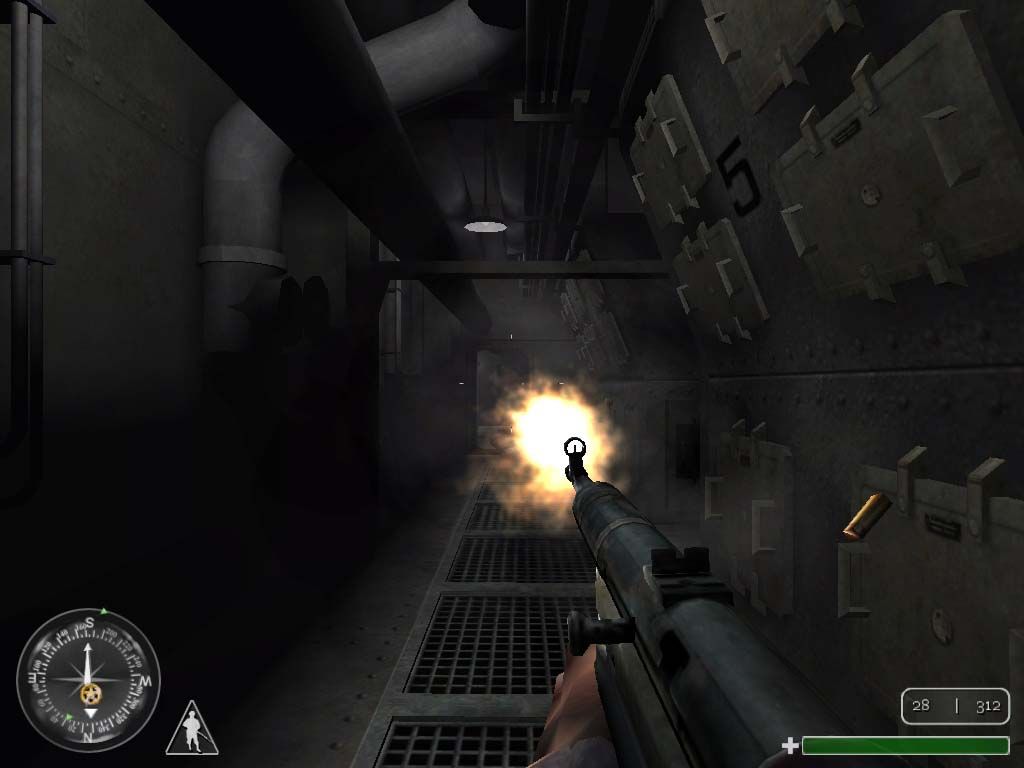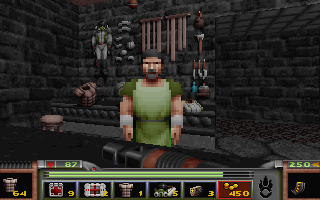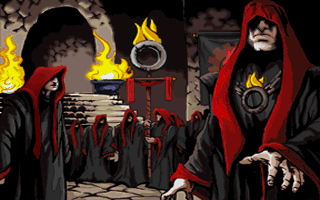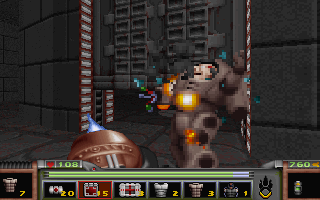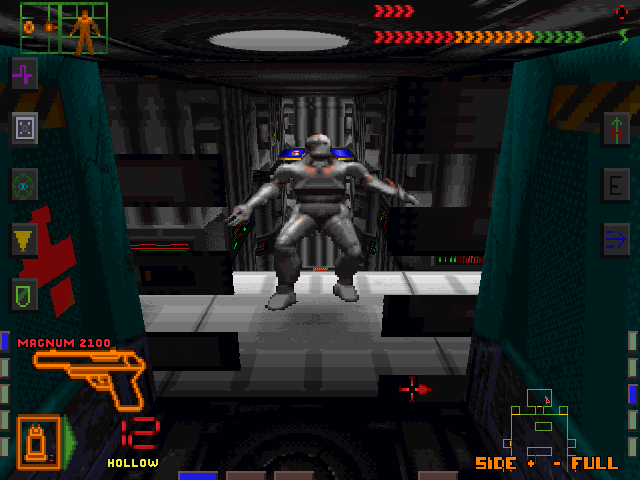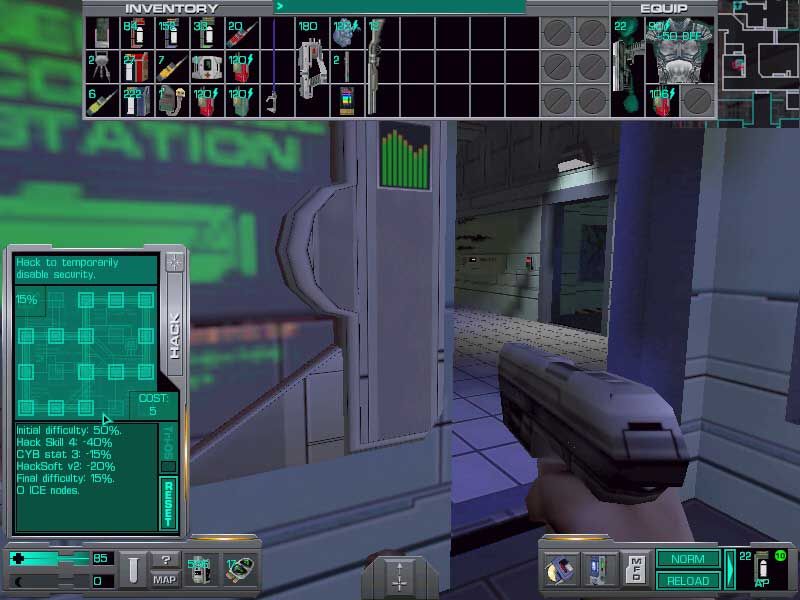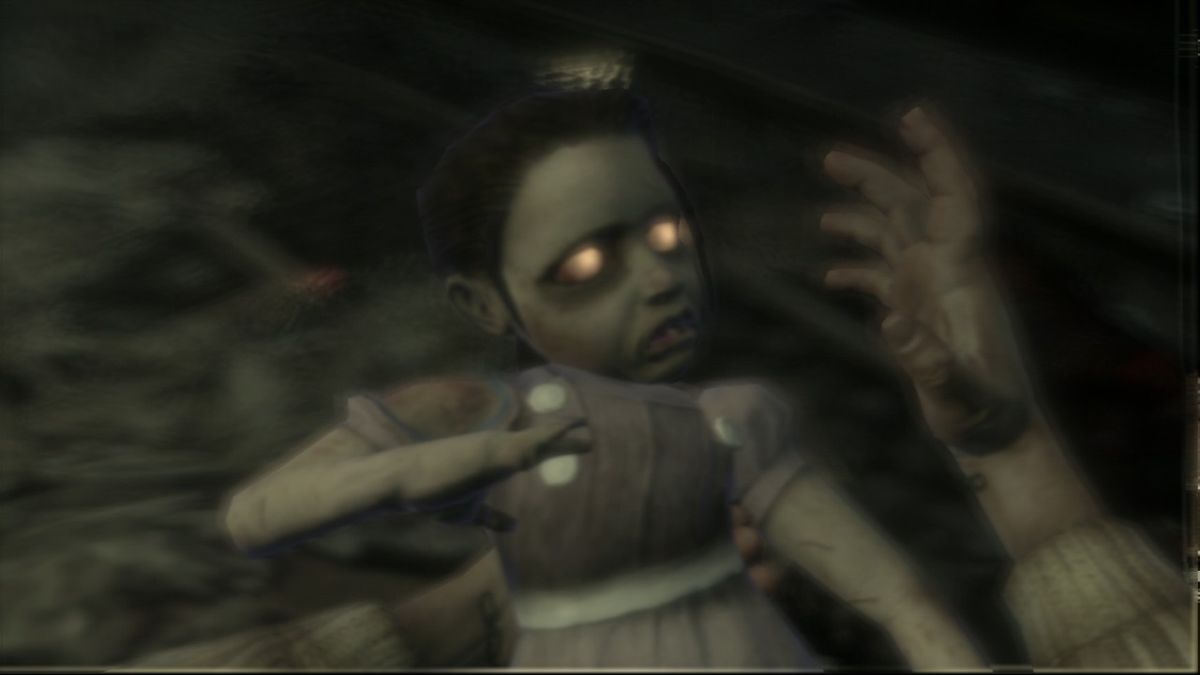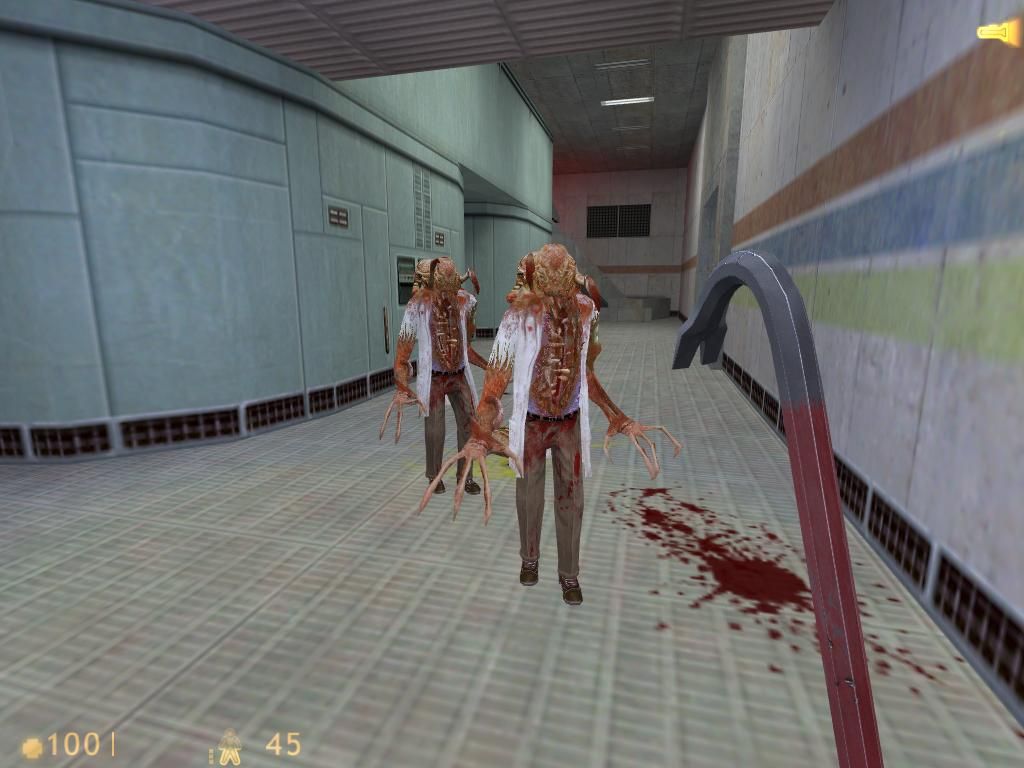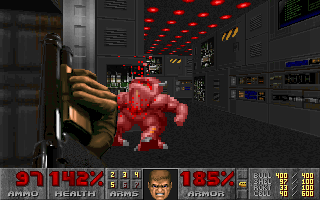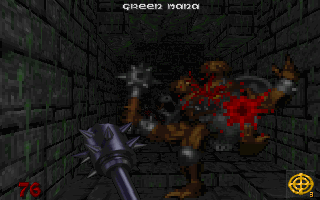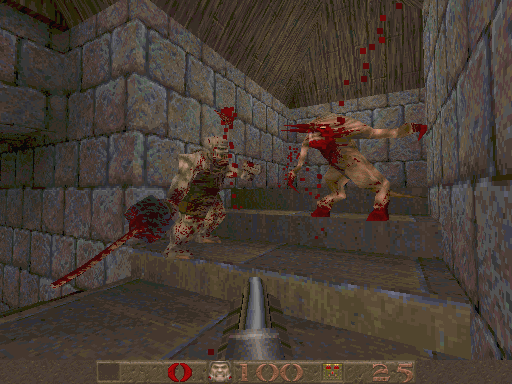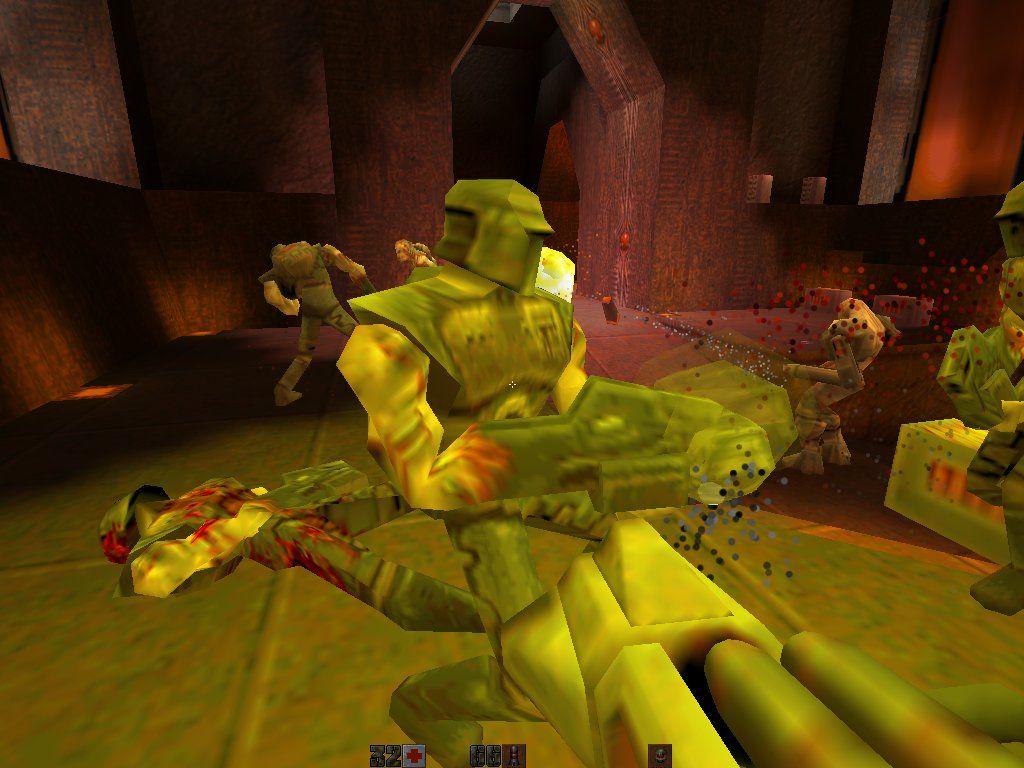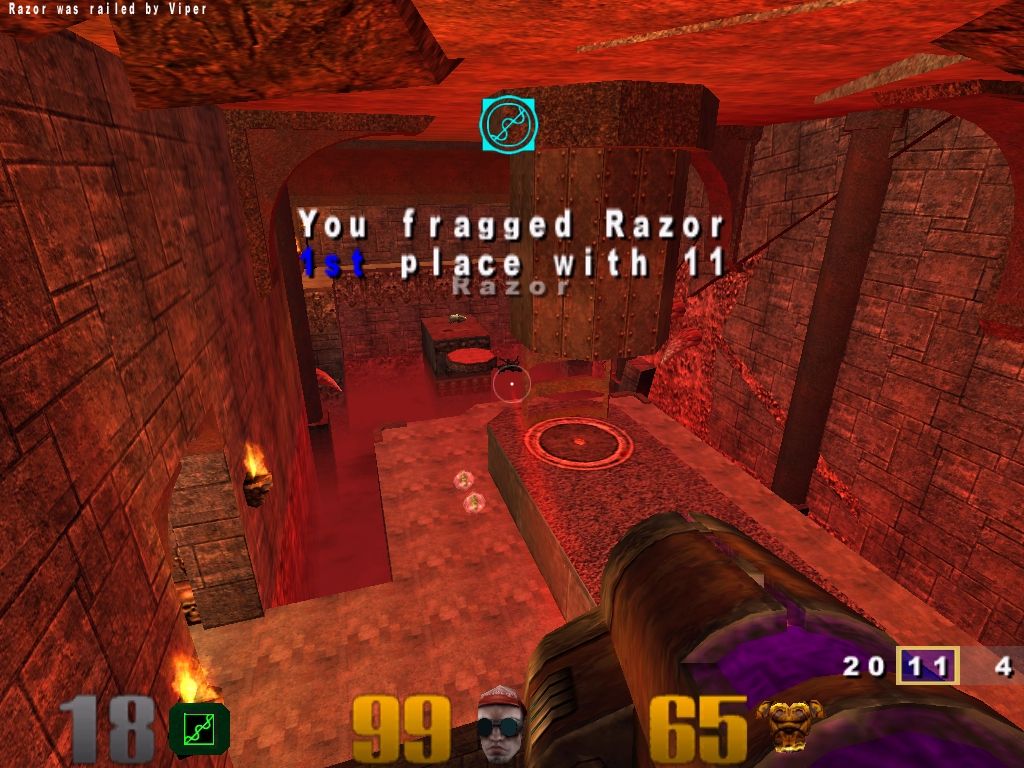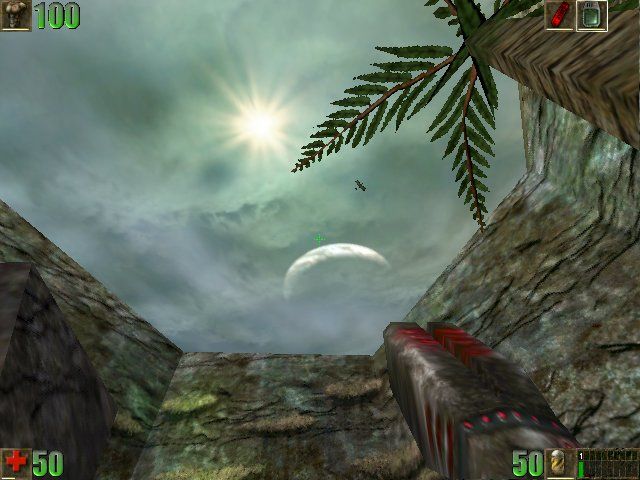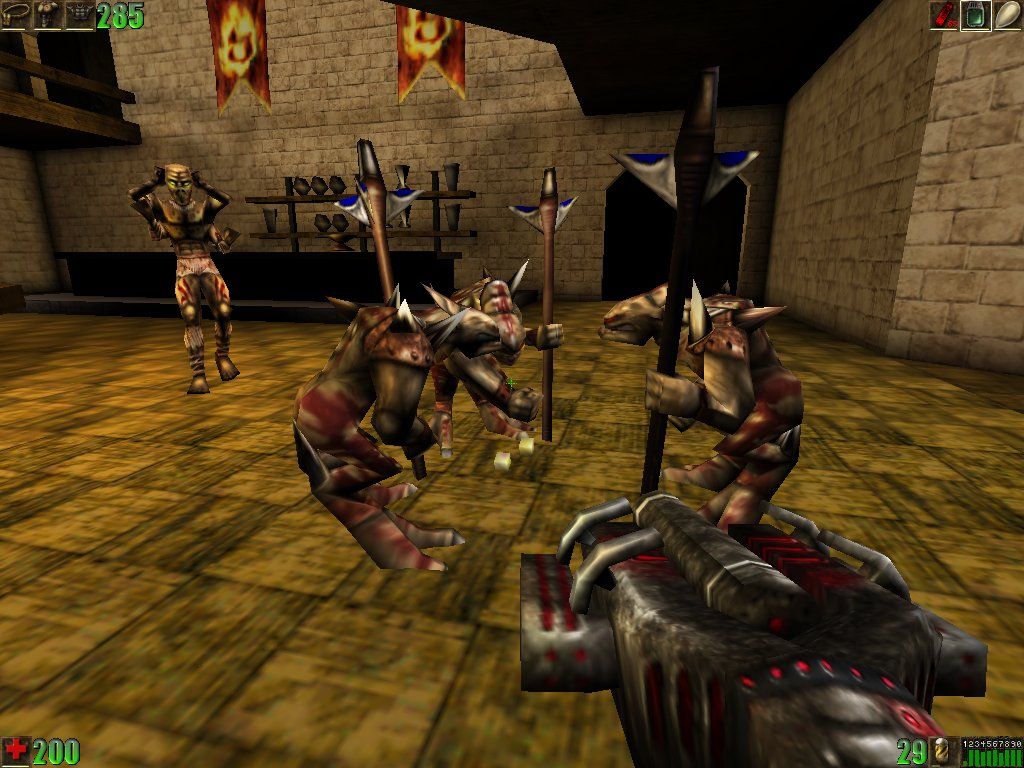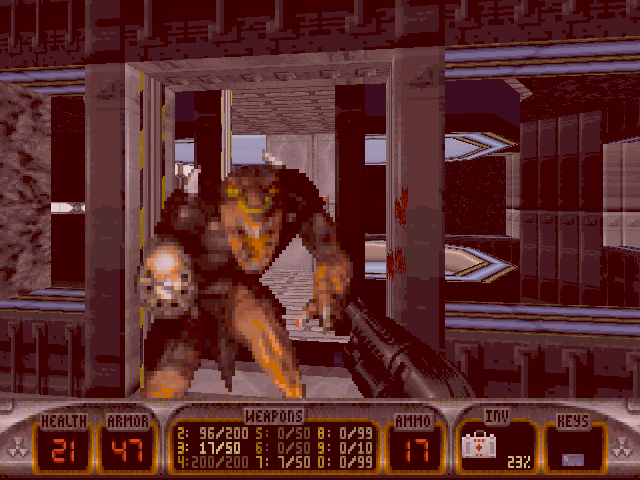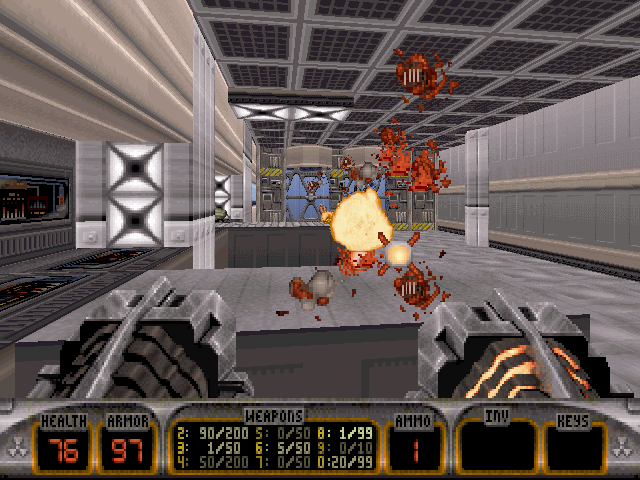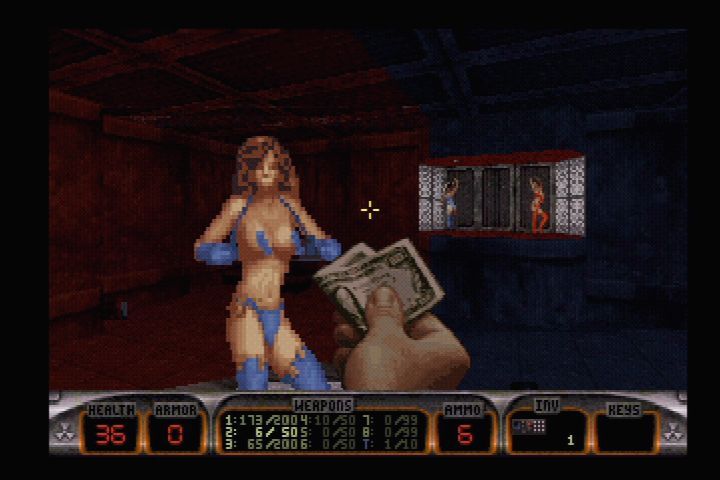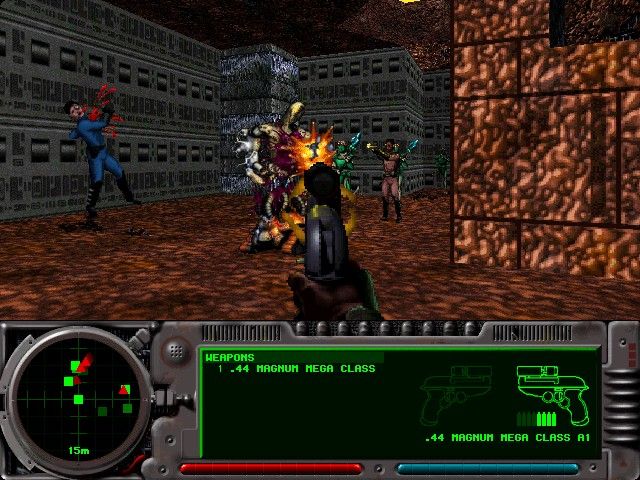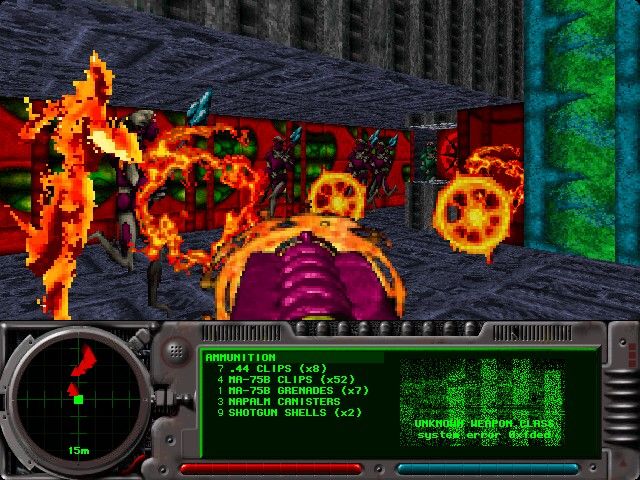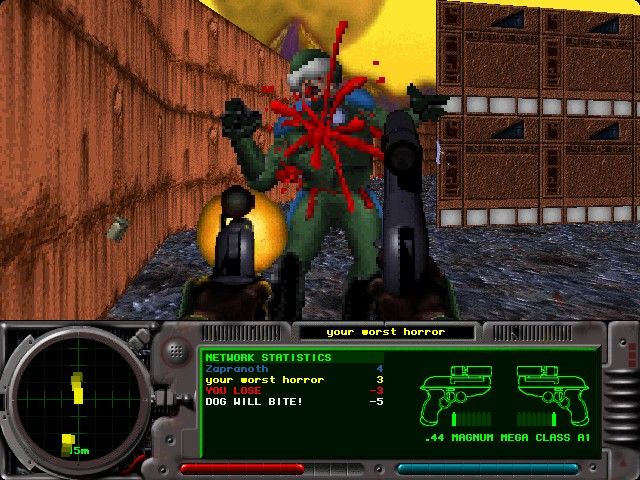Disclaimer: This review originally appeared in the TOF e-magazine (issue #11, June, 20, 2009) - see http://tim007.com/TOF.htm. 3 years have passed, I have beaten the game again (this time without stupid savestates), so I guess it's an appropriate time to translate this old review to English, also cleaning up silly things and providing kosher screenshots. Here we go:
%20%5B!%5D_00001.png)
%20%5B!%5D_00006.png)
%20%5B!%5D_00007.png)
%20%5B!%5D_00038.png)
At first I wanted to begin this review in a pathetic way, something like 'this epic masterpiece was created...' or 'a legendary game...', but then realized that the bare facts will do much better talking. In 2007, Electronic Gaming Monthly magazine has awarded Super Metroid with the 'Best Game Ever' title - in my humble opinion, rightfully so.
When it comes to popularity and influence(s), the Metroid franchise is sure comparable to other Nintendo staples such as Super Mario Bros. and The Legend Of Zelda. Back in '88, the adventures of Samus Aran perfectly succeeded in thrilling and entertaining hundreds of fans in both USA and Japan, and so it all began. The series' revolutionary concept was honorably ripped off (see Castlevania: Symphony Of The Night), perceived at a different angle (see The Guardian Legend), and all in all acknowledged by the industry - an honor only the true breakthrough games deserve. But even the most original of all games have their influences, too - in his case it might be the Saboteur series for ZX Spectrum.
And speaking of the Metroid franchise itself, no chapter in it is as important as Super Metroid. Here is where a large number of standpoints was either invented or perfected from the previous games and carried over to future releases, including the Prime trilogy. I'm talking about the gadgets, advanced tricks and abilities, exploration methods and the style of the narrative (okay, the latter does controversially differ in Metroid Fusion, the direct continuation).
My own acquaintance with the series wasn't as smooth as for you, dear reader, with Wii and Virtual Console at your side. I've tried the first game a while ago, and was disappointed. I thought that the main character is male, Metroid is his name, and the game is split to levels. But then I learned that the last conclusion was wrong, and after some time spent smoking Wikipedia, I was just scratching my head. Of course, Super Metroid was praised the most, so that was the one I decided to try, and after the final cutscene and credits roll, I was never the same again.
So, to avoid such confusion as I have experienced, for those entirely unfamiliar, here's the backstory - not without spoilers, though.
The year is 20XX, the Galaxy is seemingly at peace - and by 'seemingly' I mean constant disturbance from the hordes of so-called Space Pirates. They form an organized group of raiders and terrorists belonging to different races, but sharing one vision - chaos and terror towards the civilized world. Regular army is hardly able to contain their attacks, so the Galactic Government is mostly relying on Space Hunters - hired guns making their living by disposing of the Space Pirates for cold hard cash. The best of the Hunters is a beautiful gold-haired amazon named Samus Aran, our main character.
The game starts off with her narrating the events of Metroid 1 and 2. After the Galactic Government decided to cut the throat of any Space Pirates' activity, Samus is assigned to travel to planet Zebes, and then search and destroy Mother Brain - the literal mastermind behind the Pirate operations. Reconnaisance is successful, but after Samus walking over the dead bodies of Kraid and Ridley - Mother Brain's top henchmen - and setting her feet to the enemy HQ, suddenly they appear...
Metroids, the creatures migrated to Zebes from planet SR388, carry two interesting abilities: they multiply when exposed to radiation and feed on the bio-energy of other living creatures, something similar to Tobe Hooper's Lifeforce (though they hardly resemble Mathilda May, rather they look like green jellyfish with fangs). Also, they are capable of growing past five different forms, ending up as terrifying monsters. No wonder that the Pirates have decided to use them as cannon fodder, so when Samus walked into the core of the enemy stronghold, the Metroid clones were already floating around everywhere, ready to suck up all life from our heroine. Thankfully, she was able to dispose of as many of them as possible and blow up Mother Brain to smithereens. So is concluded the original Metroid for NES (but not Zero Mission, the GBA remake - author's note).
Then Samus is talking about the events of Metroid 2: Return Of Samus (released on GameBoy). After setting up the successful self-destruction sequence on Zebes, she headed to SR388 to set the final score with Metroids and whoever (or whatever) was breeding them all this time. Everything went just fine, but the very last surviving Metroid, a little innocent larva, had mistaken Samus for its mother, and seeing no danger coming from this child, she took it with her to the Ceres research laboratory on Zebes orbit.
And here's where Super Metroid picks up, stating that 'The Last Metroid is in captivity. The Galaxy is at peace'. So is it - the Metroid larva is given to the scientists for research, and overjoyed Samus flies away seeking another assignment, when suddenly the space station sends out a distress signal to her, being under surprise attack by Space Pirates! Quickly rushing back, Samus finds the laboratory demolished, the scientists dead, and the Metroid - ...
This is where you grab the controller, and kick it into motion.
In terms of gameplay mechanics, the game (like the rest in the series) is a non-linear open-ended adventure across the big, big world, divided into several distinct zones and filled up with secret passageways, treasure rooms and narrow spaces without any obvious dead-ends. You can go wherever you want, but there are several plot points that are exposed only when it is required by the plot itself. This interesting balance is, undeniably, one of the series' trademarks. Sometimes, scripted events such as lava flood can be triggered once you enter the room or kill a boss.
Aside from being such a determined explorer and warrior, Samus is able to upgrade her power armor by finding the artifacts and peripherals to plug in. There are several kinds of them:
To assist Samus in her long travel above and mostly below the planet surface, there is a convenient map system. All the rooms that have any points of interest are highlighted - such places include the Chozo statues (where most of the upgrades are scattered), boss chambers, and each section of the planet's underworld is hosting several kinds of special rooms which are sometimes pretty tricky to uncover and reach:
Aside from the regular goons, which the abilities, items and rooms listed above are willing to help in defeating, Zebesian grand maze surely contains several Minotaurs, each with an unskippable bossfight. Destroying them reveals new rooms to explore and strip out of items. While the boss disposal tactics are a bit on the redundant side, the fights themselves are sure as hell made as entertaining as possible, competing in an adrenaline rush with the best bosses in any Contra game. Almost every major opponent is twice or even twenty times bigger than our heroine, presenting a force of destruction worth reckoning with, all leading up to electrified and epic final confrontation!
All in all, as you can see, the gameplay is perfectly balanced with no useless features and lots of memorable moments in the usual, time-honored Nintendo fashion. But what about the aesthetic side of things?
I'll never forget seeing the opening screen for the first time. For something made by a gaming company of such reputation, it's really damn creepy with all these bleeding corpses lying around, helpless bleeping of the Metroid larva and, of course, one of the most haunting title themes ever conceived. It consists of three-something chords, sure, but it's still fascinating, how magnetic such a simple thing can be.
Once the theme song ends, some demo clips are shown. To tease the player, especially if he has beaten the game, some of them contain a display of some advanced moves, unexplained during the main campaign - like the one I like to call 'Sailor Samus' - you'll get it when you see it. Actually, after I've beaten the game for the first time, there were four such features, shown in the demo but not encountered ingame.
Speaking of the graphics, they are unbelievable! It's one of those cases when the first-party developer manages to squeeze out 150% of the console's power. There's a lot of special effects, obligatory Mode7, creative animation - even for such a traditional thing as the death of our protagonist - and most importantly, living and breating scenery in the background, from the woods of Brinstar to lava pits of Norfair and depths of Maridia. It's one of those cases where the maps are believable locations designed by an artist, not the bare blueprints drawn by a retired (or retarded) military cartographer.
This game actually ows a lot to the horror genre, perfectly keeping the trademark 'rat in the maze' attitude with its structure. And what's a better way to stress the menace and haunting environments, than to have a gloomy subtle soundtrack. There's a lot of dark ambient pieces, with some orchestral and almost heavy metal tunes mixed in for variety (but mostly, for the boss fights or unexpected events), managing to keep even the most psychedelic melodies catchy and memorable. A good example will be the Wrecked Ship theme, phobic and quiet, with some downtuned drums in the background, but by God does it compliment the atmosphere. It was one of those rare moments in gaming when I was really getting scared.
What's left to discuss... the controls, maybe. Sure everything is handled very smoothly - no lagging, no thumb-aching combinations - with the exception of wall and Space jumps, maybe - aside from the advantages described above, it's just so fun to play. It even was fun and convenient to play since the very first Metroid - thankfully, no game in the series suffers from the same drawbacks as, say, pre-SotN Castlevanias. And yeah, Symphony Of The Night, as directly inspired by Super Metroid as it is, ironically was the first in its series where the controls got really polished and beefed up. Influences can be good sometimes!
Here's all I wanted to say about a masterpiece called Super Metroid. Is it a good game? It's a phenomenal one. In terms of the gross revenue, it wasn't a smash hit even in Japan, but it was noticed and praised rightfully for its innovation, immersion, atmosphere and intelligence. It broke new ground for the game designers, gave way to eight sequels, prequels, midquels and spin-offs, and remains one of the most popular speedrunning games, for all those players willing to beat it as fast as possible collecting one hundred percent items and receiving a thumbs up from armor-less Samus. Genesis did do what Nintendidn't, but it never even tried to outdo what Nintendid with Super Metroid. Go play it, like... NOW!
%20%5B!%5D_00001.png)
%20%5B!%5D_00006.png)
%20%5B!%5D_00007.png)
%20%5B!%5D_00038.png)
At first I wanted to begin this review in a pathetic way, something like 'this epic masterpiece was created...' or 'a legendary game...', but then realized that the bare facts will do much better talking. In 2007, Electronic Gaming Monthly magazine has awarded Super Metroid with the 'Best Game Ever' title - in my humble opinion, rightfully so.
When it comes to popularity and influence(s), the Metroid franchise is sure comparable to other Nintendo staples such as Super Mario Bros. and The Legend Of Zelda. Back in '88, the adventures of Samus Aran perfectly succeeded in thrilling and entertaining hundreds of fans in both USA and Japan, and so it all began. The series' revolutionary concept was honorably ripped off (see Castlevania: Symphony Of The Night), perceived at a different angle (see The Guardian Legend), and all in all acknowledged by the industry - an honor only the true breakthrough games deserve. But even the most original of all games have their influences, too - in his case it might be the Saboteur series for ZX Spectrum.
And speaking of the Metroid franchise itself, no chapter in it is as important as Super Metroid. Here is where a large number of standpoints was either invented or perfected from the previous games and carried over to future releases, including the Prime trilogy. I'm talking about the gadgets, advanced tricks and abilities, exploration methods and the style of the narrative (okay, the latter does controversially differ in Metroid Fusion, the direct continuation).
My own acquaintance with the series wasn't as smooth as for you, dear reader, with Wii and Virtual Console at your side. I've tried the first game a while ago, and was disappointed. I thought that the main character is male, Metroid is his name, and the game is split to levels. But then I learned that the last conclusion was wrong, and after some time spent smoking Wikipedia, I was just scratching my head. Of course, Super Metroid was praised the most, so that was the one I decided to try, and after the final cutscene and credits roll, I was never the same again.
So, to avoid such confusion as I have experienced, for those entirely unfamiliar, here's the backstory - not without spoilers, though.
The year is 20XX, the Galaxy is seemingly at peace - and by 'seemingly' I mean constant disturbance from the hordes of so-called Space Pirates. They form an organized group of raiders and terrorists belonging to different races, but sharing one vision - chaos and terror towards the civilized world. Regular army is hardly able to contain their attacks, so the Galactic Government is mostly relying on Space Hunters - hired guns making their living by disposing of the Space Pirates for cold hard cash. The best of the Hunters is a beautiful gold-haired amazon named Samus Aran, our main character.
The game starts off with her narrating the events of Metroid 1 and 2. After the Galactic Government decided to cut the throat of any Space Pirates' activity, Samus is assigned to travel to planet Zebes, and then search and destroy Mother Brain - the literal mastermind behind the Pirate operations. Reconnaisance is successful, but after Samus walking over the dead bodies of Kraid and Ridley - Mother Brain's top henchmen - and setting her feet to the enemy HQ, suddenly they appear...
Metroids, the creatures migrated to Zebes from planet SR388, carry two interesting abilities: they multiply when exposed to radiation and feed on the bio-energy of other living creatures, something similar to Tobe Hooper's Lifeforce (though they hardly resemble Mathilda May, rather they look like green jellyfish with fangs). Also, they are capable of growing past five different forms, ending up as terrifying monsters. No wonder that the Pirates have decided to use them as cannon fodder, so when Samus walked into the core of the enemy stronghold, the Metroid clones were already floating around everywhere, ready to suck up all life from our heroine. Thankfully, she was able to dispose of as many of them as possible and blow up Mother Brain to smithereens. So is concluded the original Metroid for NES (but not Zero Mission, the GBA remake - author's note).
Then Samus is talking about the events of Metroid 2: Return Of Samus (released on GameBoy). After setting up the successful self-destruction sequence on Zebes, she headed to SR388 to set the final score with Metroids and whoever (or whatever) was breeding them all this time. Everything went just fine, but the very last surviving Metroid, a little innocent larva, had mistaken Samus for its mother, and seeing no danger coming from this child, she took it with her to the Ceres research laboratory on Zebes orbit.
And here's where Super Metroid picks up, stating that 'The Last Metroid is in captivity. The Galaxy is at peace'. So is it - the Metroid larva is given to the scientists for research, and overjoyed Samus flies away seeking another assignment, when suddenly the space station sends out a distress signal to her, being under surprise attack by Space Pirates! Quickly rushing back, Samus finds the laboratory demolished, the scientists dead, and the Metroid - ...
This is where you grab the controller, and kick it into motion.
In terms of gameplay mechanics, the game (like the rest in the series) is a non-linear open-ended adventure across the big, big world, divided into several distinct zones and filled up with secret passageways, treasure rooms and narrow spaces without any obvious dead-ends. You can go wherever you want, but there are several plot points that are exposed only when it is required by the plot itself. This interesting balance is, undeniably, one of the series' trademarks. Sometimes, scripted events such as lava flood can be triggered once you enter the room or kill a boss.
Aside from being such a determined explorer and warrior, Samus is able to upgrade her power armor by finding the artifacts and peripherals to plug in. There are several kinds of them:
- - Weapon upgrades. Those are self-explanatory - we start off with a classic pew-pew blaster, but near the end it is upgraded to serious business. Also, there are missiles and mines, each of two kinds. Only the first type of mines is available as soon you receive the Morph Ball (see below) and has infinite ammo - for the Power Bombs and both kinds of missiles, both ammo and capacity upgrades have to be collected.
- - Spacesuit upgrades. There are three spacesuits available, counting the starting one, and each has its own features, such as resistance to water buoyancy and lava heat. Also, Samus is able to somehow contort herself into a rolling ball and explore the smaller passageways and pipes, perform walljumps (this is a hard one, has to be mastered as you go), somersault continuously in the air, run like hell, and way more.
- - Other gadgets include the magnetic ray (gives you the ability to swing on the special kind of surfaces) and the scanner, which reveals the secret passageways when directed onto the walls, floor and ceiling.
To assist Samus in her long travel above and mostly below the planet surface, there is a convenient map system. All the rooms that have any points of interest are highlighted - such places include the Chozo statues (where most of the upgrades are scattered), boss chambers, and each section of the planet's underworld is hosting several kinds of special rooms which are sometimes pretty tricky to uncover and reach:
- - The Save room (S icon). Pretty simple - you enter, you save, you go on exploring. They're situated pretty fairly, rare enough for the game to keep being challenging, and often enough to reduce any frustration as much as possible.
- - The Map room (M icon) reveals the geography for the current location. Fortunately for the true treasure-seekers, not the whole map is revealed, so you're still never sure if you have uncovered all the possible spots.
- - Missile reload room (Missile icon)
- - Health recharge room (Sun icon)
- - Samus' ship (eh, you'll see it anyway) - it's capable of refilling health and missiles, along with saving your current progress. Unfortunately it's immobile, so you can't really rely on it too often.
Aside from the regular goons, which the abilities, items and rooms listed above are willing to help in defeating, Zebesian grand maze surely contains several Minotaurs, each with an unskippable bossfight. Destroying them reveals new rooms to explore and strip out of items. While the boss disposal tactics are a bit on the redundant side, the fights themselves are sure as hell made as entertaining as possible, competing in an adrenaline rush with the best bosses in any Contra game. Almost every major opponent is twice or even twenty times bigger than our heroine, presenting a force of destruction worth reckoning with, all leading up to electrified and epic final confrontation!
All in all, as you can see, the gameplay is perfectly balanced with no useless features and lots of memorable moments in the usual, time-honored Nintendo fashion. But what about the aesthetic side of things?
I'll never forget seeing the opening screen for the first time. For something made by a gaming company of such reputation, it's really damn creepy with all these bleeding corpses lying around, helpless bleeping of the Metroid larva and, of course, one of the most haunting title themes ever conceived. It consists of three-something chords, sure, but it's still fascinating, how magnetic such a simple thing can be.
Once the theme song ends, some demo clips are shown. To tease the player, especially if he has beaten the game, some of them contain a display of some advanced moves, unexplained during the main campaign - like the one I like to call 'Sailor Samus' - you'll get it when you see it. Actually, after I've beaten the game for the first time, there were four such features, shown in the demo but not encountered ingame.
Speaking of the graphics, they are unbelievable! It's one of those cases when the first-party developer manages to squeeze out 150% of the console's power. There's a lot of special effects, obligatory Mode7, creative animation - even for such a traditional thing as the death of our protagonist - and most importantly, living and breating scenery in the background, from the woods of Brinstar to lava pits of Norfair and depths of Maridia. It's one of those cases where the maps are believable locations designed by an artist, not the bare blueprints drawn by a retired (or retarded) military cartographer.
This game actually ows a lot to the horror genre, perfectly keeping the trademark 'rat in the maze' attitude with its structure. And what's a better way to stress the menace and haunting environments, than to have a gloomy subtle soundtrack. There's a lot of dark ambient pieces, with some orchestral and almost heavy metal tunes mixed in for variety (but mostly, for the boss fights or unexpected events), managing to keep even the most psychedelic melodies catchy and memorable. A good example will be the Wrecked Ship theme, phobic and quiet, with some downtuned drums in the background, but by God does it compliment the atmosphere. It was one of those rare moments in gaming when I was really getting scared.
What's left to discuss... the controls, maybe. Sure everything is handled very smoothly - no lagging, no thumb-aching combinations - with the exception of wall and Space jumps, maybe - aside from the advantages described above, it's just so fun to play. It even was fun and convenient to play since the very first Metroid - thankfully, no game in the series suffers from the same drawbacks as, say, pre-SotN Castlevanias. And yeah, Symphony Of The Night, as directly inspired by Super Metroid as it is, ironically was the first in its series where the controls got really polished and beefed up. Influences can be good sometimes!
Here's all I wanted to say about a masterpiece called Super Metroid. Is it a good game? It's a phenomenal one. In terms of the gross revenue, it wasn't a smash hit even in Japan, but it was noticed and praised rightfully for its innovation, immersion, atmosphere and intelligence. It broke new ground for the game designers, gave way to eight sequels, prequels, midquels and spin-offs, and remains one of the most popular speedrunning games, for all those players willing to beat it as fast as possible collecting one hundred percent items and receiving a thumbs up from armor-less Samus. Genesis did do what Nintendidn't, but it never even tried to outdo what Nintendid with Super Metroid. Go play it, like... NOW!


